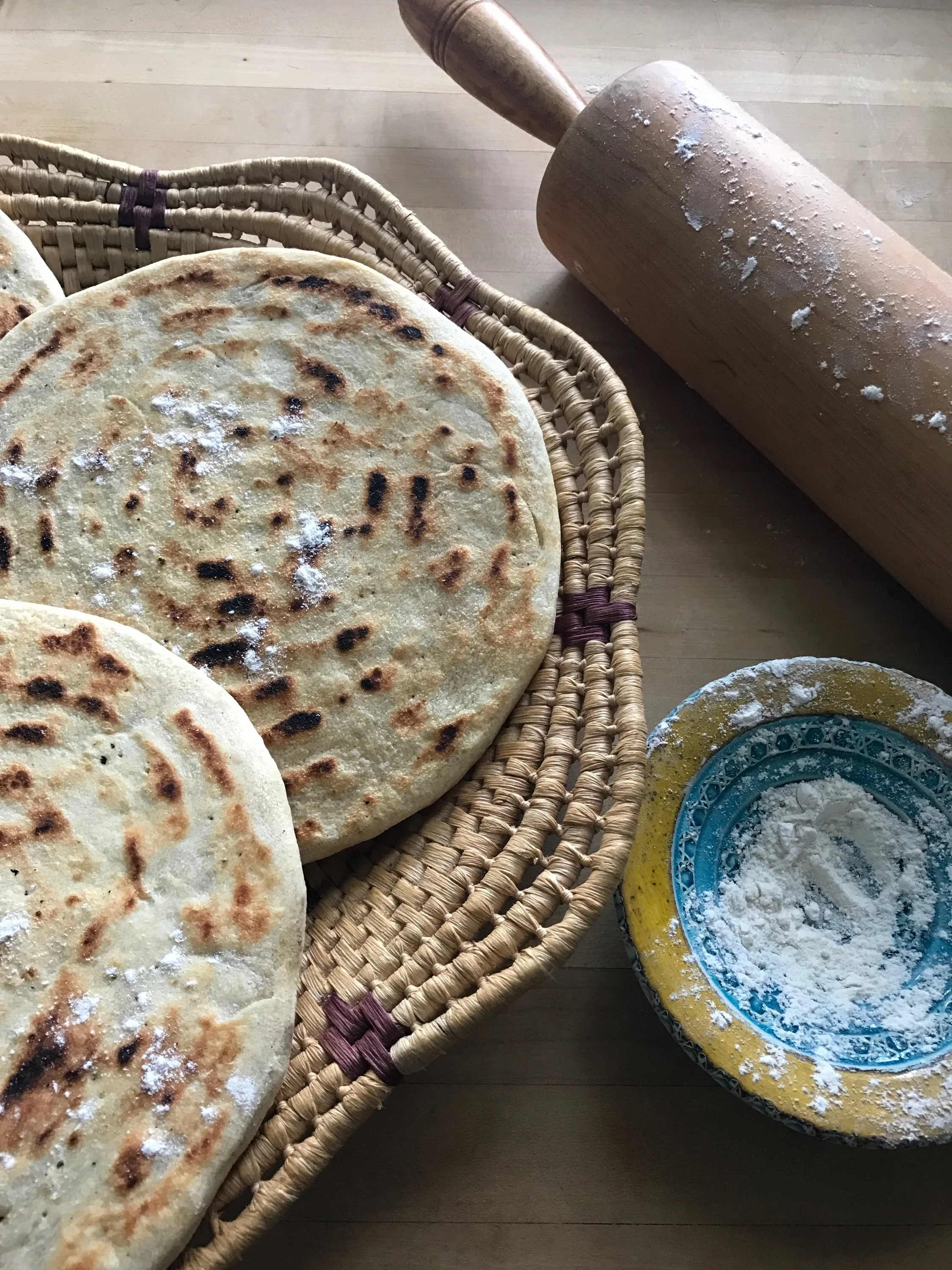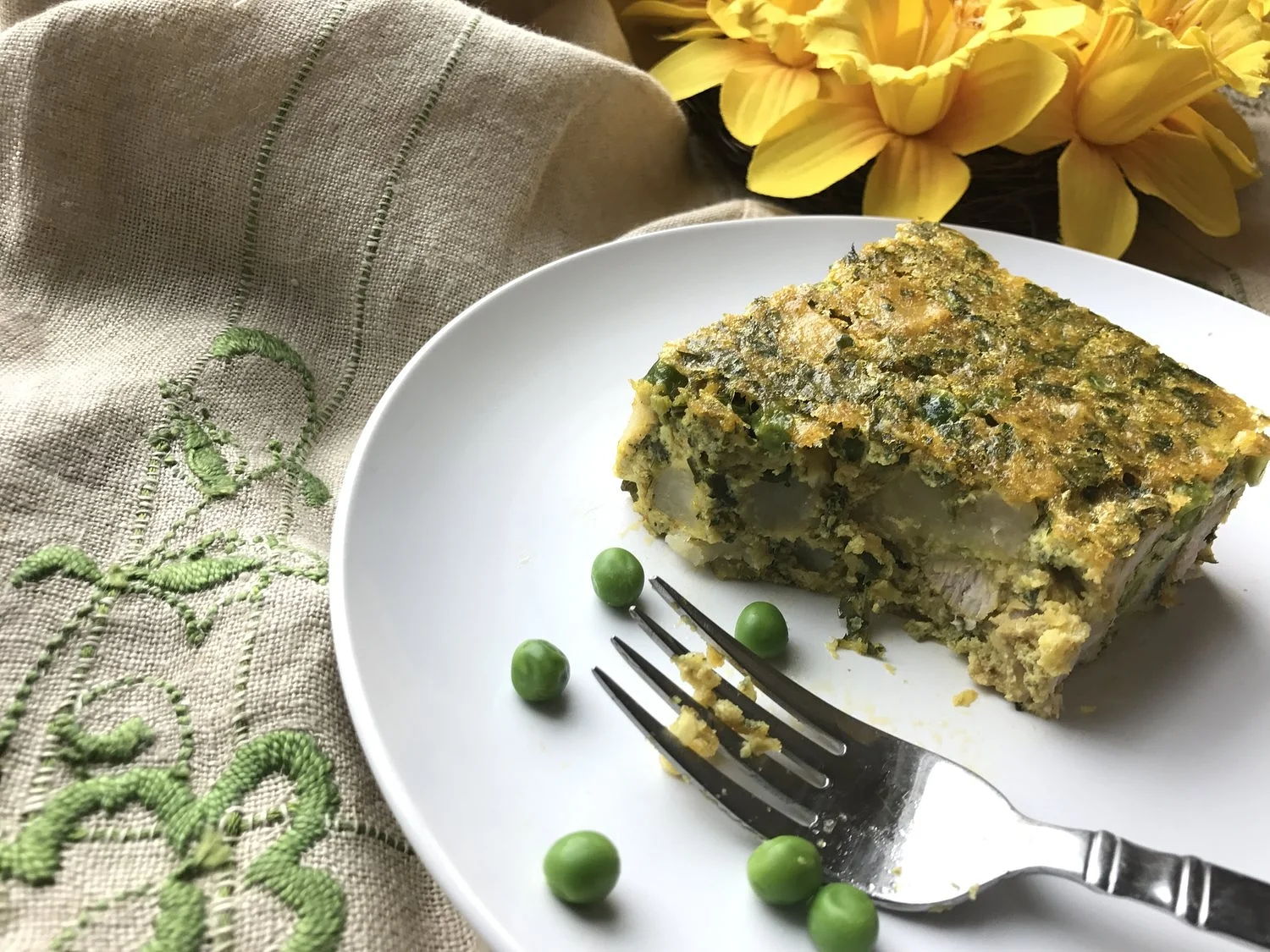Kesra bread
Bread in Tunisia and Algeria is sacred. Just read all about the bread riots in the 1980's here. Not only is it affordable for all classes thanks to government subsidies, it's delicious and the perfect vehicle with which to mop up Tunisian sauces. It's just as important a "utensil" as a fork and every meal is blessed with bread, even carb-laden ones such as makrouna. How else are you going to get those remnants of sauce?
As a holdover from French colonization, many Tunisians and Algerians today accompany their meals with baguettes (which can be found at any corner bakery). Most households, however, also make their own traditional North African style breads, and if you ask us, they are much tastier. Today we're featuring kesra, a round, soft, and chewy bread with cook marks.
RECIPE FOR KESRA:
Ingredients:
5 cups flour (all purpose, unbleached)
1 tbs salt
½ cup vegetable oil (can use olive oil as well)
1 ⅓ cup water (amount may vary)
Sesame seeds or black seeds (optional)
Preparation:
In a mixing bowl, add the flour, salt, and oil. Add in any seeds at this point if using them.
Note: There are several ways to mix bread dough. In a bowl/counter top by hand, in a standing mixer with a dough hook, or in a bread machine. If using a bread machine, just make sure to stop it and remove the dough before it begins the rising process.
Add the water and begin mixing until all the ingredients come together.
Note: Amount of water used may vary depending on humidity, elevation, etc. You want enough water so that the dough comes together and is soft and smooth but also firm enough to be easily formed into rounds and hold together nicely when it needs to be lifted/moved.
Knead the dough until it comes together in a smooth, homogeneous ball. Divide the ball into smaller, evenly-sized balls about the size of a fist. (This recipe should yield you about 5-6).
If the dough starts to feel dry at any point, smooth a little oil around the outside.
Lightly cover the balls of dough with a little oil to keep the outside from drying and allow to rest for at least 20 minutes.
In the meantime, preheat a flat, shallow pan over medium high heat and grease lightly with oil. A heavy pan such as one made of cast iron works really well. Try to find one with embossed rings to get the circle pattern on the bread.
Begin rolling out the first ball of dough. Use your hands or a rolling pin. Roll into an even circle about ¼ inch thick.
*Note: You’ll know the dough has adequately rested when it doesn’t spring back as you are flattening it. If it does spring back, set aside and let rest longer. Also, while working with one piece of the dough, make sure to flip and add oil as needed to the other balls of dough so they don’t dry out as you are working.
Carefully lift your bread and place on the pan. To do this gently flip half of the circle over and place your hand underneath, and use your other hand to help flip it back over and lift the other half--the goal is to have two hands flat underneath the bread. You can also use a wide, oiled spatula to help you.
Let cook for several minutes on each side. Use a toothpick to poke small holes in the bread to keep air bubbles from forming.
Remove from the pan and set on a cooling rack while to finish cooking the rest of the bread.
Serve while warm with your favorite food. It’s great with olive oil and harissa, or as a side to a delicious stew. (It can be served in whole discs or cut into triangles.)








